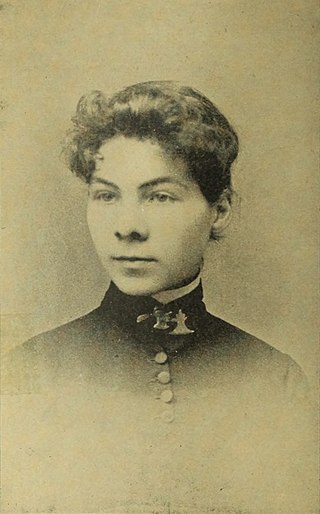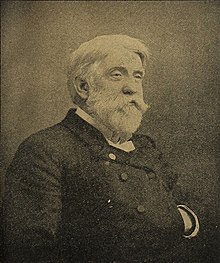PART TWO of He said, She Said in 1894 – Pollard v. Breckinridge
RECAP of Part One. Where love meets legal? Weeks of accusations, lurid details about premarital sex and money and the nation was following it all. Current and a familiar story? The first “He said, She said” that went viral begins in 1894. Keep in mind viral in the 1890’s was newspaper coverage and person-to-person gossip. This story is considered a turning point for a culture that considered the best work for women to be a wife. Women are not able to vote, serve on juries and even apply to college without a man “of good standing”.

Madeline becomes pregnant twice and both times leaves the babies (who subsequently died) as orphans at Breckinridge’s urging. She has a charismatic personality and enjoys a social life in Washington DC. without needing Breckinridge’s influence or introduction. She is often in the company of artists and writers.
Breckinridge secures her a job working in government at a time when it is unusual for a woman to do so. Her attendance is again as poor as it had been in college and she loses her job. Breckinridge’s second wife dies in 1892 and now Madeline is certain that Breckinridge will marry her. Madeline becomes pregnant a third time, but she miscarries. The wedding date is set for May 31, 1893. She announces their engagement in the Washington Post newspaper. He publicly rebuts her claim in a different newspaper. And then? Madeline finds out he has already remarried again in April. Her name is Louisa Wing, a cousin of Breckinridge and his third wife is not even another young woman; she is 48 years old.
This infuriated Madeline and she sues him for Breach of Promise and $50,000 in damages. As a single and “ruined” women with no husband, she would likely have no other source of income. Breckinridge is now 57 and Madeline is in her early 30’s. The testimony from both sides is scandalous for the day. He is a wealthy and respected lawyer and Congressman. She is made to look like a prostitute and a stalker that has trapped Breckinridge. For more courtroom theater, Madeline wears black clothing to court and is even accompanied by a nun.

Both sides have multiple lawyers and excellent legal representation. The corruption on the Breckinridge side extends to a woman who pretends to be a friend of Madeline’s, but is actually a paid “spy” using a fake name and reporting back to him. And cronyism? Breckinridge even attended church with the presiding Circuit Judge, Andrew Bradley. Women are not only not allowed to sit on a jury, they are not allowed to be in the courtroom if the testimony was to be too “indelicate”. Week after week the accusations fly and the nation follows all of the salacious details. The systems for hiding mistresses and their pregnancies are exposed. It all comes out – the pregnancies, her arrangement with James Rhodes, a relationship of some sort with Rossell in Cincinnatti. Julia Blackburn, the well-respected widow of a Kentucky governor and a friend of Madeline’s, testified as a witness and said she too had been told by Breckinridge that he and Madeline were engaged.
The publicity was instrumental in gaining support (and possibly funding) from women all over the country. They too wanted to be independent and work if they chose to without needing permission from their husbands. So how does it end? Amazingly, the verdict is in favor of Madeline after less than an hour and a half of deliberation. Damages were granted to her in the amount of $15,000, but she never did receive any of the money. Women who had followed the trial became active in politics and in Womens Suffrage in Kentucky. Madeline was admired by many women of wealth and even asked to give lectures.

When Breckinridge ran for what should have been an easy re-election the nation watched in fascination as opposition mounted. Female students at a Kentucky college vowed not to accept Breckinridge supporters as suitors. Women in Lexington even held a picnic for his opponent, with a parade, banners and 30,000 attendees. He lost his bid for Congress by less than 300 votes as well as his career and his reputation. Col. William C. P. Breckinridge died in 1904.

Madeline moved to London after the trial where she befriended a wealthy Irish widow and became her travel companion. Madeline enjoyed seeing other countries including Italy, Germany and Egypt. Her social life once again included many artists and writers. Despite all of the publicity, Madeline V. Pollard never changed her name. She also never married and she died in 1945.
RESOURCES
Because this case was a legal precedent, there are also many scholastic sources available.
“Sex, Scandal, and Suffrage in the Gilded Age.” The Historian: A Journal of History 42, no.2 (February 1980): 225-43.
Lexington, Fayette. The Celebrated Case of Col. lV. C. P. Breckinridge and Madeline Pollard Chicago: Current Events Publishing, 1894.
Parker, Agnes. The Real Madeline Pollard: A Diary of Ten Weeks’ Association with the Plaintiff in the Famous Breckinridge-Pollard Suit. New York: G. W. Dillingham, 1894.
Ross, Shelley. Fall from Grace: Sex, Scandal, and Corruption in American Politics from 1702 to the Present. New York: Ballantine Books, 1988.
https://www.encyclopedia.com/law/law-magazines/william-breckinridge-breach-promise-trial-1894
https://www.kyhistoryhaunts.com/episodes/episode-83-pollard-v-breckinridge-the-breach-of-promise-case
https://en.wikipedia.org/wiki/Breach_of_promise
https://anchor.fm/jessie-bartholomew/episodes/Pollard-v–Breckinridge–The-Breach-of-Promise-Case-e1dsi25
https://www.smithsonianmag.com/arts-culture/court-case-inspired-gilded-age-me-too-movement-180970538/
I am surprised a movie has not been made!
I am too!!!
Purposely avoided looking for more of this story online and waited for Part Two. When you think of contemporary csses of the rich and powerful avoiding accountability, this verdict surprised me but it sounds like Pollard led a satisfying life after the scandal.